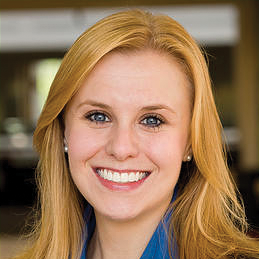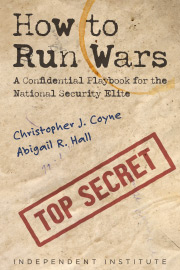In August, the Transportation Security Administration (TSA) ended a monthlong contest it hopes will shorten the time that travelers spend in airport-security lines. Agency officials plan to award $15,000 in prize money to the applicants with the best ideas. My suggestion—disband the TSA and liberalize security.
Anyone who has flown since late 2001 is familiar with the cumbersome check-in procedures. Before flying, passengers must now present ID, subject themselves to searches of their person and property, and limit what they bring in their carry-on luggage. Most airports recommend passengers arrive no later than 90 minutes to two hours before their departure time in order to clear security.
Many people consider the TSA’s policies an unacceptable invasion of privacy. Others, however, suggest they are necessary to “keep us safe.” But are they truly necessary or effective at preventing terrorism? The answer: not even close.
First, air travel is incredibly safe. According to a report from the RAND Corporation, more than 6 billion enplanements (individuals getting on a plane) occurred between 2001 and 2011. During that time, far more people died in incidents related to mechanical failures on aircraft than in security-related scenarios. When the latter did occur, perpetrators such as the infamous “underwear bomber” were apprehended by passengers, not by airport security.
Let’s suppose security is needed. How does the TSA perform compared to the alternatives? One of its main jobs is to detect explosives. An internal agency report in 2011 found TSA was largely ineffective in this regard. When tested, agents at two of the nation’s busiest airports failed to detect fake bombs 60 percent or 75 percent of the time. Compare these rates to those of private airport security. The Government Accountability Office reported that private screeners missed fake explosives only 40 percent of the time, and this was in 1990, when security technology was much less advanced than today.
So why does the TSA perform so poorly? The answer lies in its bureaucratic structure. Unlike for-profit firms, the agency does not face the right incentives. In a market setting, private firms contend with profit and loss. Earning a profit signals that a firm is providing a valuable service to the public and should continue its activities. A loss conveys the opposite. This profit-and-loss mechanism gives private firms incentives to please their customers and invent new and better ways to provide their services.
A bureaucratic organization such as the TSA, however, does not face such feedback. Instead, a bureaucracy looks to increase its share of government funds. It does so in two ways. First, it tries to signal to the larger government that its work fulfills major government objectives and should be expanded. TSA officials do this by claiming their agency prevents acts of terrorism. Second, a bureaucracy expands by exhausting its budget and demonstrating that it cannot accomplish its goals with the resources given. In the context of the TSA, this implies the organization has an incentive to get worse, not better, by continuously expanding its budget and security procedures. If the TSA were to rapidly improve speed and efficiency, this would show the government that the agency could do the same job with fewer resources. Budgets would be cut, and personnel would be released. Unlike a private firm facing competitive pressures, the TSA does not benefit from reducing costs, improving performance and increasing speed.
The TSA’s recent contest may show that the organization knows it’s less than loved by travelers, but we shouldn’t expect it to radically improve our flying experience. The contest won’t change the underlying incentives it faces. The TSA, a government-run bureaucracy, lacks the incentives to adapt, innovate and cut costs. If we are really looking to increase airport security and reduce air-travel time, we should abolish it.








